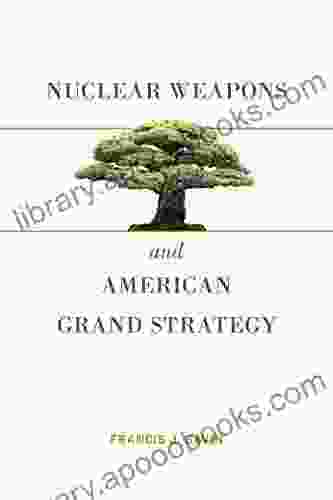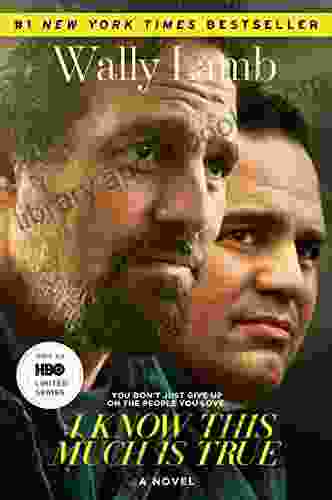Nuclear Weapons and American Grand Strategy: The Evolution of U.S. Nuclear Policy and Its Implications for the 21st Century

In the tumultuous aftermath of World War II, the United States emerged as the world's preeminent power, armed with an arsenal of nuclear weapons that promised both unparalleled destruction and the potential for global peace. The decision to develop and deploy these weapons marked a profound turning point in American foreign policy, shaping the nation's grand strategy for decades to come.
In "Nuclear Weapons and American Grand Strategy," a magisterial work of historical analysis, esteemed historian John Lewis Gaddis explores the complex interplay between nuclear weapons and the United States' pursuit of its national interests. Through a meticulous examination of archival records, interviews with key policymakers, and a comprehensive analysis of secondary sources, Gaddis paints a vivid and nuanced portrait of the evolution of American nuclear policy from its inception to the present day.
4.5 out of 5
| Language | : | English |
| File size | : | 2468 KB |
| Text-to-Speech | : | Enabled |
| Screen Reader | : | Supported |
| Enhanced typesetting | : | Enabled |
| Word Wise | : | Enabled |
| Print length | : | 323 pages |
The Atomic Bomb and the Dawn of the Nuclear Age
The genesis of America's nuclear program can be traced back to the early days of World War II, when fears mounted that Nazi Germany was developing its own atomic bomb. In response, the United States launched the Manhattan Project, a top-secret undertaking that brought together some of the world's brightest scientists to develop a nuclear weapon before the Nazis.
The successful detonation of an atomic bomb at the Trinity test site in New Mexico in July 1945 marked a pivotal moment in human history. The weapon's unprecedented destructive power cast long shadows over the postwar era, leaving policymakers to grapple with the profound implications of nuclear technology.
The atomic bombings of Hiroshima and Nagasaki in August 1945 hastened the end of World War II but also raised profound moral and ethical questions about the use of nuclear weapons. As the United States emerged from the war as the world's sole nuclear power, its leaders faced an unprecedented challenge: how to harness this formidable new technology to ensure their nation's security while minimizing the risk of nuclear war.
The Truman Era: Containment and Deterrence
In the aftermath of World War II, the United States adopted a policy of containment aimed at preventing the Soviet Union from expanding its communist sphere of influence. The Truman administration's grand strategy relied heavily on nuclear weapons as a deterrent to Soviet aggression. The United States sought to maintain a nuclear monopoly, believing that the threat of overwhelming retaliation would deter the Soviets from any major military action against its allies in Europe.
The outbreak of the Korean War in 1950 tested the limits of American containment policy. The Truman administration authorized the use of tactical nuclear weapons to counter the threat posed by Chinese intervention in the conflict. However, the decision ultimately proved unnecessary as the Chinese refrained from launching a full-scale invasion of South Korea.
The Eisenhower Era: Massive Retaliation and Strategic Air Command
The Eisenhower administration took office in 1953 with a renewed commitment to the policy of containment. However, the emergence of a Soviet nuclear arsenal in the late 1950s forced the United States to revisit its grand strategy. The Eisenhower administration adopted a doctrine of "massive retaliation," threatening to respond to any Soviet aggression with overwhelming nuclear force.
The United States invested heavily in its nuclear arsenal and delivery systems during the Eisenhower era. The Strategic Air Command (SAC) was expanded and modernized, becoming the backbone of America's nuclear deterrent. SAC bombers patrolled the skies on continuous alert, ready to unleash their deadly cargo at a moment's notice.
The Kennedy Era: Flexible Response and the Cuban Missile Crisis
The Kennedy administration came to power in 1961 with a more nuanced approach to nuclear strategy. The administration rejected the Eisenhower-era doctrine of massive retaliation in favor of a policy of "flexible response," which aimed to provide the United States with a wider range of options in the event of Soviet aggression.
The Cuban Missile Crisis of 1962 brought the United States and the Soviet Union to the brink of nuclear war. The crisis arose when the United States discovered that the Soviets had secretly deployed nuclear missiles in Cuba, just 90 miles from American shores. After days of tense negotiations, the Soviets agreed to remove the missiles in exchange for a U.S. pledge not to invade Cuba and to remove its own nuclear missiles from Turkey.
The Johnson Era: Nuclear Nonproliferation and the Vietnam War
The Johnson administration assumed office in 1963 with a strong commitment to nuclear nonproliferation. The administration signed the Nuclear Non-Proliferation Treaty in 1968, which aimed to prevent the spread of nuclear weapons to additional countries.
The Vietnam War posed a significant challenge to American nuclear policy. The Johnson administration authorized the use of tactical nuclear weapons to counter the North Vietnamese offensive of 1968, but ultimately refrained from ng so due to fears of escalation.
The Nixon Era: Détente and Arms Control
The Nixon administration came to power in 1969 with a new emphasis on détente with the Soviet Union. The administration sought to reduce tensions and promote cooperation between the two superpowers, while continuing to maintain a credible nuclear deterrent.
The Nixon administration also made significant progress on arms control. The Strategic Arms Limitation Treaty (SALT I) of 1972 placed limits on the number of nuclear missiles and submarine-launched ballistic missiles each side could possess. The Anti-Ballistic Missile (ABM) Treaty of 1972 prohibited the development and deployment of nationwide missile defense systems.
The Carter Era: Human Rights and Nuclear Freeze
The Carter administration came to power in 1977 with a strong commitment to human rights and arms control. The administration sought to reduce the risk of nuclear war by negotiating new arms control agreements with the Soviet Union and by promoting the nuclear freeze movement, which called for a halt to the production, testing, and deployment of nuclear weapons.
The Carter administration also played a key role in the signing of the Camp David Accords in 1978, which brokered a peace agreement between Israel and Egypt. The accords helped to stabilize the Middle East and reduce tensions between two potential nuclear powers.
The Reagan Era: Strategic Defense Initiative and Arms Control
The Reagan administration came to power in 1981 with a more assertive approach to nuclear strategy. The administration increased defense spending and launched the Strategic Defense Initiative (SDI),an ambitious program to develop a nationwide missile defense system.
The Reagan administration also pursued arms control agreements with the Soviet Union. The Intermediate-Range Nuclear Forces (INF) Treaty of 1987 eliminated all intermediate-range nuclear missiles from Europe. The Strategic Arms
4.5 out of 5
| Language | : | English |
| File size | : | 2468 KB |
| Text-to-Speech | : | Enabled |
| Screen Reader | : | Supported |
| Enhanced typesetting | : | Enabled |
| Word Wise | : | Enabled |
| Print length | : | 323 pages |
Do you want to contribute by writing guest posts on this blog?
Please contact us and send us a resume of previous articles that you have written.
 Book
Book Novel
Novel Page
Page Chapter
Chapter Text
Text Story
Story Genre
Genre Reader
Reader Library
Library Paperback
Paperback E-book
E-book Magazine
Magazine Newspaper
Newspaper Paragraph
Paragraph Sentence
Sentence Bookmark
Bookmark Shelf
Shelf Glossary
Glossary Bibliography
Bibliography Foreword
Foreword Preface
Preface Synopsis
Synopsis Annotation
Annotation Footnote
Footnote Manuscript
Manuscript Scroll
Scroll Codex
Codex Tome
Tome Bestseller
Bestseller Classics
Classics Library card
Library card Narrative
Narrative Biography
Biography Autobiography
Autobiography Memoir
Memoir Reference
Reference Encyclopedia
Encyclopedia Jon Savage
Jon Savage Jonathan Clements
Jonathan Clements Orson Scott Card
Orson Scott Card Katherine Locke
Katherine Locke Joy Piano
Joy Piano John Hollander
John Hollander John E Douglas
John E Douglas Josh Sutton
Josh Sutton Nick Crossley
Nick Crossley K E O Connor
K E O Connor Rich Deakin
Rich Deakin Judy P Sopronyi
Judy P Sopronyi Julia Gillard
Julia Gillard Tony Harrison
Tony Harrison Joshua M Gold
Joshua M Gold Richard Barrios
Richard Barrios Juan Flores
Juan Flores Lynn Eustis
Lynn Eustis Sabella O Abidde
Sabella O Abidde Malcolm Guite
Malcolm Guite
Light bulbAdvertise smarter! Our strategic ad space ensures maximum exposure. Reserve your spot today!
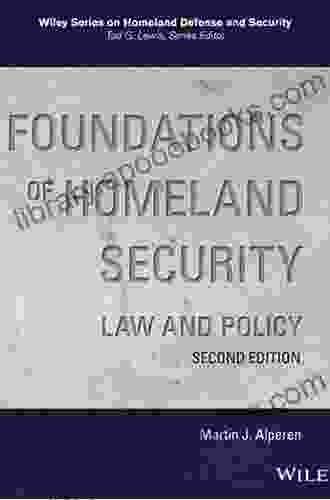
 Frank ButlerUnveiling the Transformative Power of Homeland Defense and Security: Delve...
Frank ButlerUnveiling the Transformative Power of Homeland Defense and Security: Delve...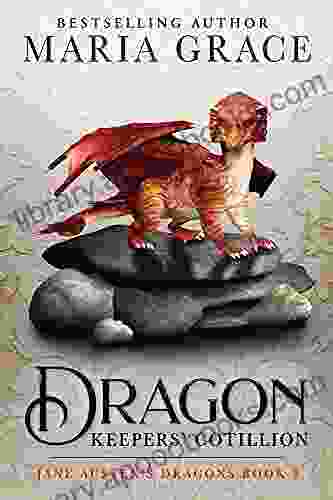
 George R.R. MartinIndulge in the Enchanting World of "Dragon Keepers Cotillion: Jane Austen...
George R.R. MartinIndulge in the Enchanting World of "Dragon Keepers Cotillion: Jane Austen...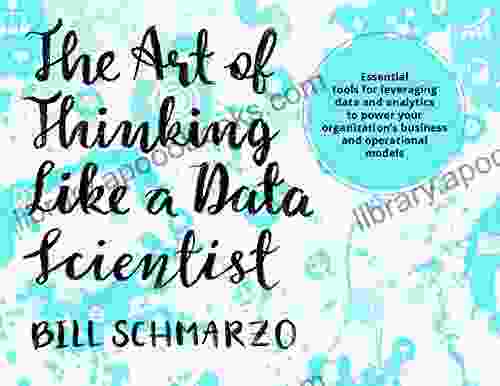
 Floyd RichardsonEssential Tools For Leveraging Data And Analytics To Power Your Organization
Floyd RichardsonEssential Tools For Leveraging Data And Analytics To Power Your Organization Elliott CarterFollow ·18.9k
Elliott CarterFollow ·18.9k Colin FosterFollow ·17.4k
Colin FosterFollow ·17.4k Forrest ReedFollow ·17.2k
Forrest ReedFollow ·17.2k Dan BrownFollow ·9.8k
Dan BrownFollow ·9.8k Bob CooperFollow ·6k
Bob CooperFollow ·6k Jerome PowellFollow ·18.6k
Jerome PowellFollow ·18.6k Jan MitchellFollow ·18.6k
Jan MitchellFollow ·18.6k Cortez ReedFollow ·5.7k
Cortez ReedFollow ·5.7k

 Tyler Nelson
Tyler NelsonHer Dragon to Slay: Embark on an Epic Journey of...
In a realm where shadows dance and legends...

 Zachary Cox
Zachary Cox101 Best Marine Invertebrates: The Adventurous Aquarist's...
Unveiling the Enchanting Realm...

 William Wordsworth
William WordsworthHer Dragon Fire: Unleash the Power Within Your Soul
Embark on an...

 William Powell
William PowellUnveiling the Enchanting World of Machine Embroidery with...
Embroidery, an ancient art form that has...

 Will Ward
Will WardGolden Fire Clan Dragon Guard: A Journey into a Realm of...
Prepare to be...

 Gustavo Cox
Gustavo CoxProject Ideas to Elevate Your Hobbies and Flourish Your...
<p>Welcome to the ultimate guide to...
4.5 out of 5
| Language | : | English |
| File size | : | 2468 KB |
| Text-to-Speech | : | Enabled |
| Screen Reader | : | Supported |
| Enhanced typesetting | : | Enabled |
| Word Wise | : | Enabled |
| Print length | : | 323 pages |


